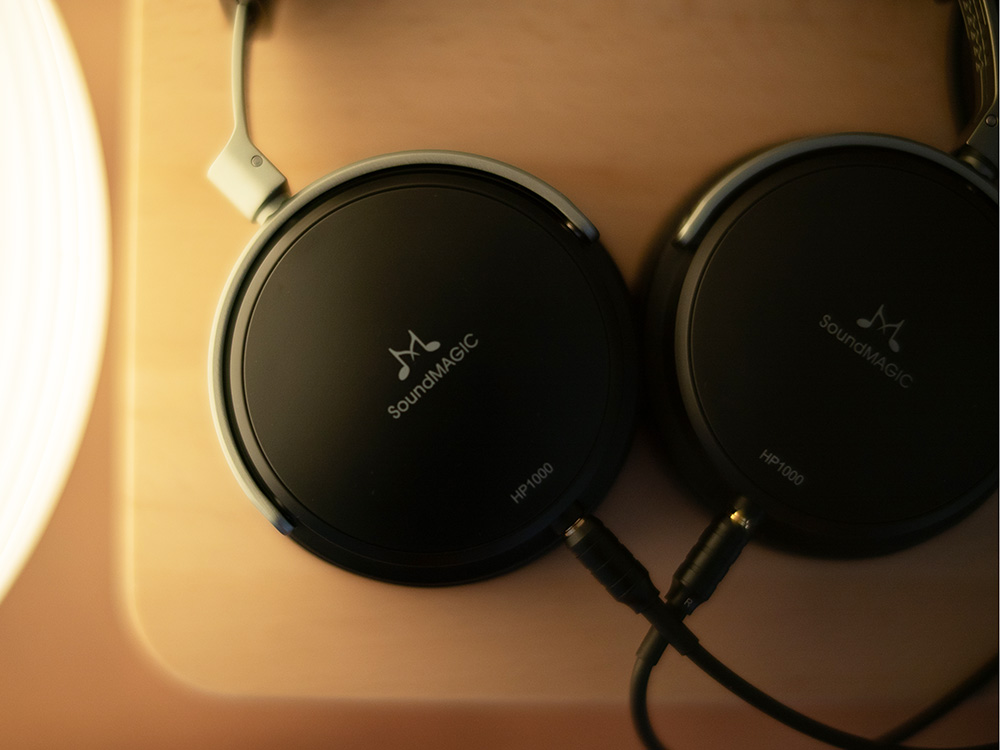TEL
+86 769-8127 0118
+86 755-8831 6487
pros:
Massive outside of the head holographic soundstage for a closed back headphone or even headphones in general, layering and imaging is spot on, analytical cold signature done right: no harshness and balanced across the spectrum, bass does not bleed into the mids and is well controlled, mids are detailed and impactful, highs are well extended and controlled. Very detailed and revealing for their price range, makes you hear extra hidden layers within soundtracks you haven't heard before, beautiful and comfortable build quality which Soundmagic provides good customer support in case problems arise.
cons:
The massive soundstage can sometimes alter the timber of vocals, instruments which on other headphones sound close can sound far away though detail is not lost, can get fatiguing at higher volumes, some ringing in the lower and higher mids at higher volumes but this is common for closed backs, sub-bass is slightly rolled off and could use a hint more body, proprietary cable though I like the design philosophy behind them, coloured upper midrange enhance soundstage,texture, details and layering but create a signature which is not necessarily reference, better for active listening.
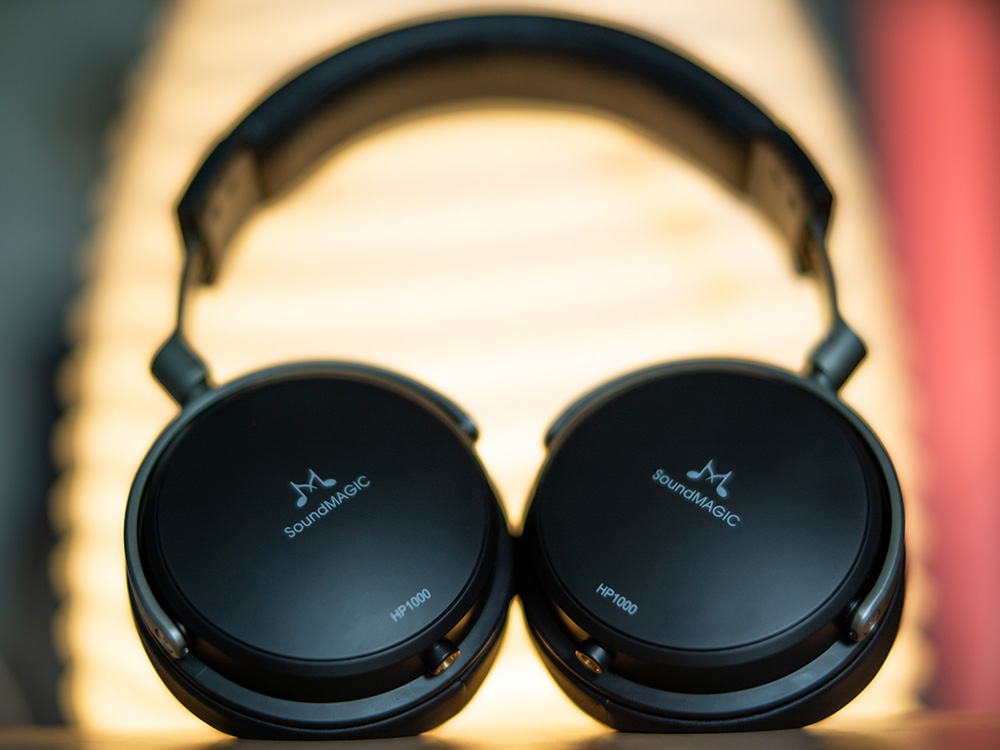
The biggest soundstage and best detail in a closed back headphone in it's
price range category, and maybe even beyond.
The Soundmagic HP-1000 is the new flagship over-ear headphone from Soundmagic which I will be reviewing here. I come from a background that mostly consists of closed backs, so I am very excited to review this one.
As a hobbyist I try to keep improving my use of sound jargon in order to correctly and accurately describe the headphone I am reviewing. I am no professional by any means,and do not own any measuring equipment to fortify my arguments with, but consider
myself an experienced listener never the less. I do think measurements are a useful extra tool in order to confirm perceptions, or expose some inherent technical flaw. However, I also believe that headphones are more than just measurements, which is where I can an
experienced viewpoint that can inform you on whether a headphone has as special quality or is a must buy for everyone. I will be comparing it mostly to Soundmagic's famous predecessor, the HP150, but will draw comparison to other headphones as well.
I clocked in around my usual 50 hours with this headphone, listening to a variety of music genres, watching movies and playing games. My music preferences range from Trip Hop such as Bonobo or Emancipator, to movie soundtracks such as Blade Runner 2049 or The Dark Knight and ambient track such as what Moby or DJ Shadow can provide. If you are curious of my tastes in headphones you can further check out my profile page where you can see other reviews of headphones or the gear that I own. As an extra here is my current Spotify playlist 2020:
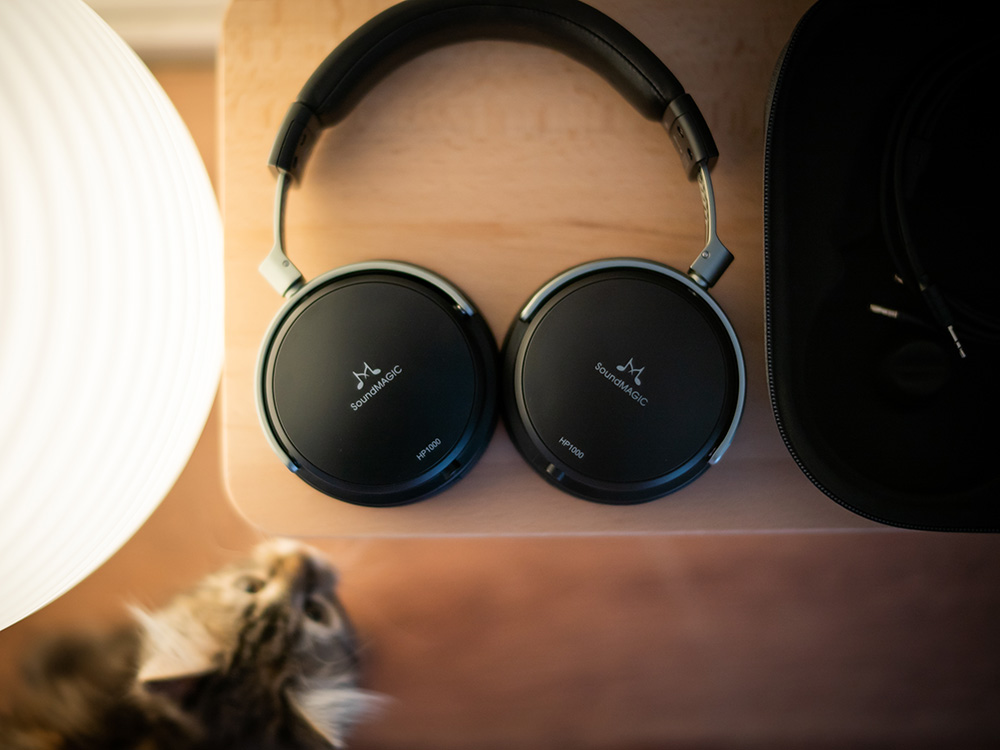
General sound experience and overal frequency response sensations
Soundmagic is discovering their headphone house sound. Soundstage in closed back headphones that start to rival their open backs. This headphone totally aims at layering all the elements without overruling one or the other, aims at sound positioning and aims at
soundstage. Does it deliver?
Let's first start with soundstage. But how exactly can we define soundstage anyways?Defining this term further I find necessary with these headphones as only then can the signature be understood. On Head-fi I have seen it being defined in terms of XYZ depth.
As I try to continue to grow in this hobby I am more conflicted about it defining it as such. I think the X width I can agree on. I think the X width is largely dependant on the center image which is dependant on the way the left and right sides are balanced out. The better
balanced the left/right drivers are, the better center image and less wonky positioning on the x plane. But a warm signature can sound closer than a cold one, as the body of sounds can sound closer when warmer. I think the sensation of an increased Y axis, or increased height, is more dependant on the size of the driver. In ears will for example never reach the height of a full sized over ear headphone that is larger than 50mm. The sheer size of the driver makes the image of a sound simply bigger.
But what exactly causes this image to be sensed coming from the front side? Is it that the drivers are angled? Is it that the headphones are open? Is it that the Timbre of the frequency response creates this sensation that a sound is coming from further away? Is it that from memory we recognise sounds being either far or closer? I think this has to do with a combination to all those questions, but I also think it mostly depends on the frequency response tuning and how it operates within the shell of the headphone. For example, a warm headphone is more likely to feel intimate and closer sounding than a cold headphone though a warm headphone can still feel more spacious depending on the total timbre presentation or on the design of the headphone. Smaller drivers sound more as if the sounds originate from within my head, bigger drivers tend to minimise this effect but most closed headphones never truly sound outside of your head until they are a semi open headphone. The Soundmagic HP-150 was my first closed headphone that gave me the feeling the sound originated out of my head, which is a big reason why it was quite a bit better than the famous DT-770.
Unlike speakers, headphones only truly allow us to listen to the left and right side independently with each ear. But depending on the mastering of the recording, the sensation of depth can still be perceived if the timbre of the headphone portrays a sound exactly like how it would sound from far away. But on certain recordings which have some sounds only originating in either the left or right channel at a time can end up sounding more flat than speakers because of how our brain creates the perception of depth and localisation through the difference of volume being perceived in both ears and through said timbre. So not only the design of the headphone is important, but also which recording that is being played is. In the case of the HP-1000, with the right recording, I feel it has a very broad, very tall and very deep soundstage. It succeeds the HP-150 in every way and is a worthy successor in that regard.
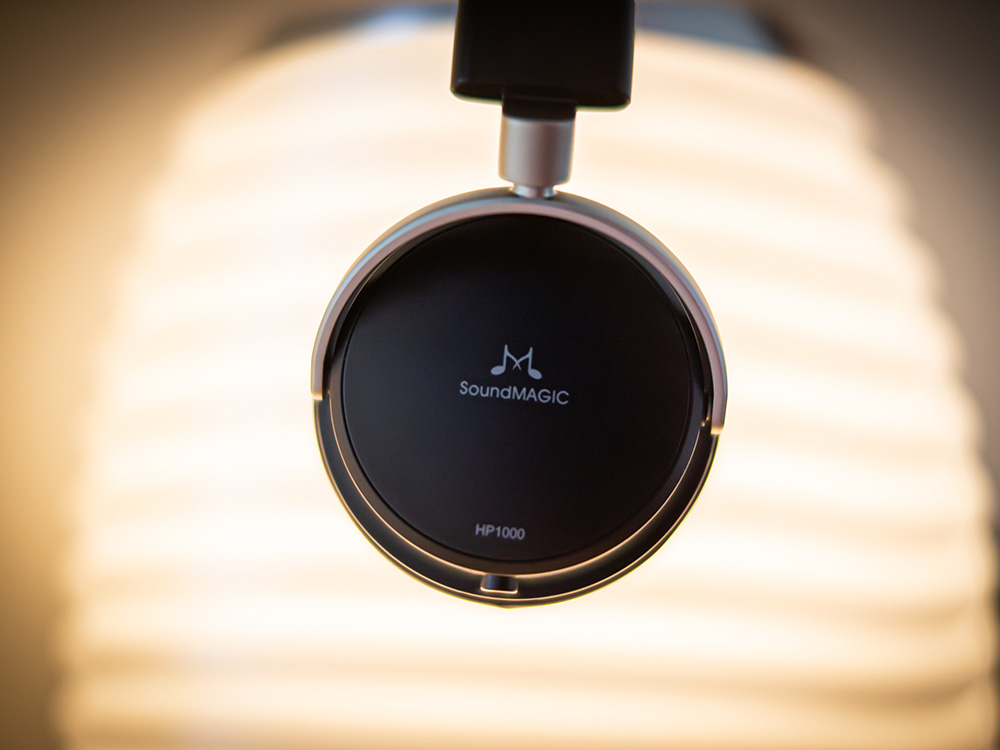
It achieves this is in various ways. First of all it's a cold analytical headphone, but it's not peaky enough anywhere on the spectrum for it to be invasive, harsh or bright. This cold sensation is only ever so slightly present however. Listening to a frequency response sweep reveals this as well. The lower mids are linearly present from the 200hz-500hz area but slowly roll off to the 1khz mark and soon drop right after. This creates the warm side that balances out the upper mids and enables the sense of space by not giving the sound elements too much body. The upper mids are coloured in such a way that there is a scoop in the middle of the 1khz-2khz area. This scoop makes the sound less fatiguing, but results in some instruments and vocals especially males sounding further away than you might be used to on other headphones. There are also these slight peaks in between the 2khz-4khz area. These peaks create the slightly cold and very revealing nature of the headphone. But these peaks don't particularly stand out to me during normal listening so they don't overshadow detail and don't sound fatiguing on normal volumes. There is this sense of smoothness and separation that I thought was only common on planar magnetic or open headphones. And let me stress again that the cold sensation leans more to neutral than to actually sounding too cold or too coloured.
I believe the way the mids are tuned here is what sets the stage, no pun intended, for this enormous soundstage. That in combination with the way the bass never interferes and the way the the highs never sound too bright or harsh enables the listener to hone in on the
many nuances hiding in soundtracks or soundscapes that headphones around lower price ranges never dream of even imaging. The amazing soundstage enables the amount of air and space that the many layers can breathe in, and so it can flawlessly image them all at
once which is truly astonishing for a closed back. This can only be truly appreciated if your only activity is actually paying attention to the music or soundscape that it's playing. In other words, the HP-1000 signature asks for you to be actively listening to it. Furthermore,
the body of the instruments might seem too distant and muffled at first, but after the 10 hour burn in mark I noticed the headphone became smoother, got a better timbre and thus became more neutral. So I absolutely recommend you take a good amount of time letting both the headphone and you settle in with the signature. It's a masterful signature at that.
Diving deeper, from Bass to Mids to Highs
Sub-bass and upper Bass
While the HP150 is a more in your face U sound signature which can be quite energetic and sometimes overwhelming in it's brightness, the HP-1000 is more of a w sound signature which approaches neutrality, with a coloured upper mid-range as mentioned before, that emphasises soundstage and texture and is thus leaning on the slight cold and analytical side. Unlike the HP150 there is no raised sub-bass. The sub-bass is actually slightly rolled off after the 40HZ mark. At the lower volumes it is a very clean and controlledsub-bass. There is a nice texture and tightness to it with a hint of physical rumble. It's great for tracking bass lines of bass guitars though at times I felt it could use just a bit more volume in busy passage ways. This might have to do with the fact that I come from a background of headphones with prominent sub-bass. The upper bass is also quite linear and manages to kick hard enough to allow for the tracking of drum kicks or impacts. There is a great sense of body and tightness from the upper bass and I can describe it as quite ideal for bass guitar or weight to strings. The best part is that there is no hint of bass bleeding or interfering with the rest of the spectrum, which can be quite prominent other closed back headphones.
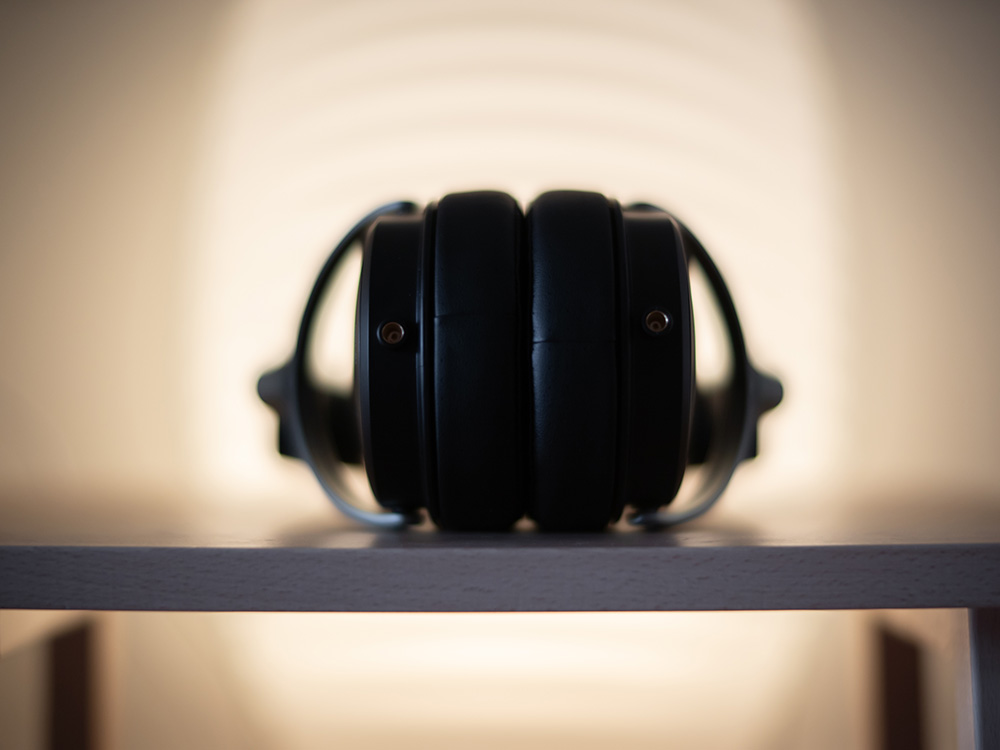
Lower and higher mids
As mostly described earlier, the mids are coloured to enable the soundstage to be so large. They can be quite detailed and very revealing. I hear elements I never heard before from my other headphones in my collection. In comparison to the E-MU Teak for example,I found the HP-1000 to be more revealing but not necessarily more detailed. The Teak is still more detailed but is more forgiving and more laidback which means it's not as analytical as the HP-1000. There were many background noises, effects or voices that
became clear to me on the HP-1000. Switching back to the Teak I ended up noticing them too but in a more relaxed fashion which makes you less likely to hone in on the texture of those layers. The HP-1000 presents all these details so evenly that you can start to dissect them better from one and another. Little nuances in singer's voices such as sighing or breathing can be noticed faster, or secondary singers in the background stand out easier.Piano keys really feel like they are being pushed in and have great texture. Electric guitars have plenty of body and bite and can sound actually quite upfront if the track calls for it.Acoustic guitars are imaged very natural and little nuances of chord switching or string pulling are all sonically portrayed here. Trumpets sound very crunchy and beautiful.Though it is important to keep in mind that the spaciousness can also negatively effect the sound and can get rid of an intimacy that some might always prefer in while listening to their recordings. Especially with vocals, which can almost seem a bit hollow at first,especially males as mentioned before. The vocals can be very detailed though, it's just that the vocals are now placed in a further away space that they were not before on other headphones. But vocal textures are impressive even if they are distanced away. I do enjoy vocals on these but they won't win the most natural award here. This has to do with the analytical side of this headphone.
In busy passage ways such as orchestra I also noticed that all the instruments were more separated than most dynamic offerings can do. The speed and decay is quick. It was easy to localise each instrument when many of them fired at once, but each axis of the soundstage is so wide that you really need to actively listen to the soundtrack in order to accurately localise each element in your mind. This again is due to the less intimate and close sounding nature of the headphone, and requires one's full attention. I read in the other reviews that they found the timbre to be a bit off. I can not agree with that statement though I understand where they come from. This is not a headphone with warm mids, and if one is used to the scooped upper mids most headphones have these HP-1000's can come off as quite cold or coloured. And as in comparison the the HP150, the HP-1000 have much more dimensionality and detail to the mids. I found the HP150, while having a good timbre, sounding less detailed and more peaky in comparison.
Highs, Presence and Brilliance
The highs on these are also very detailed. The timbre is well done, I get a very natural sensation from instruments their energy and body. This means that there are no peaks in the highs that annoy or interfere with the rest of the spectrum or that would cause
harshness or sibilance. I wouldn't call the highs bright but they are extended enough for a certain crowd whom are used to rolled off highs to find them bright. I normally don't mention recordings in my reviews as everyone listens to different music, but "Take Five" by The Dave Brubeck Quartet is so excellently portrayed here with the snares sounding impactful, natural and highly detailed. There is a sense of volume and depth to the highs that most other closed backs portray as artificial, thin and brittle. The highs while being articulate don't miss a hint of body. Sometimes the body is a bit exaggerated, probably by the raised 5khz area. But this never is too intruding to my ears. Rarely I missed the air of an open headphone but sometimes in order to feel less grainy the highs could use a bit more air to breathe in. Open headphones simply will have highs that sing a bit more due to being cleaner and a tad smoother. I found the Teak for example, which is semi-open, to sound smoother and also cleaner in the highs. But the Teak is in another price bracket so there is that. Finally, there might be a peak in the presence region that slightly sticks out on some recordings as I do hear a tad bit too much sparkle from for example tracks containing a tambourine jamming through them. But this is mostly remedied by improving your source, amp and playing an uncompressed format. This is also nitpicking in what I would call great highs from a closed back, especially for the price range.
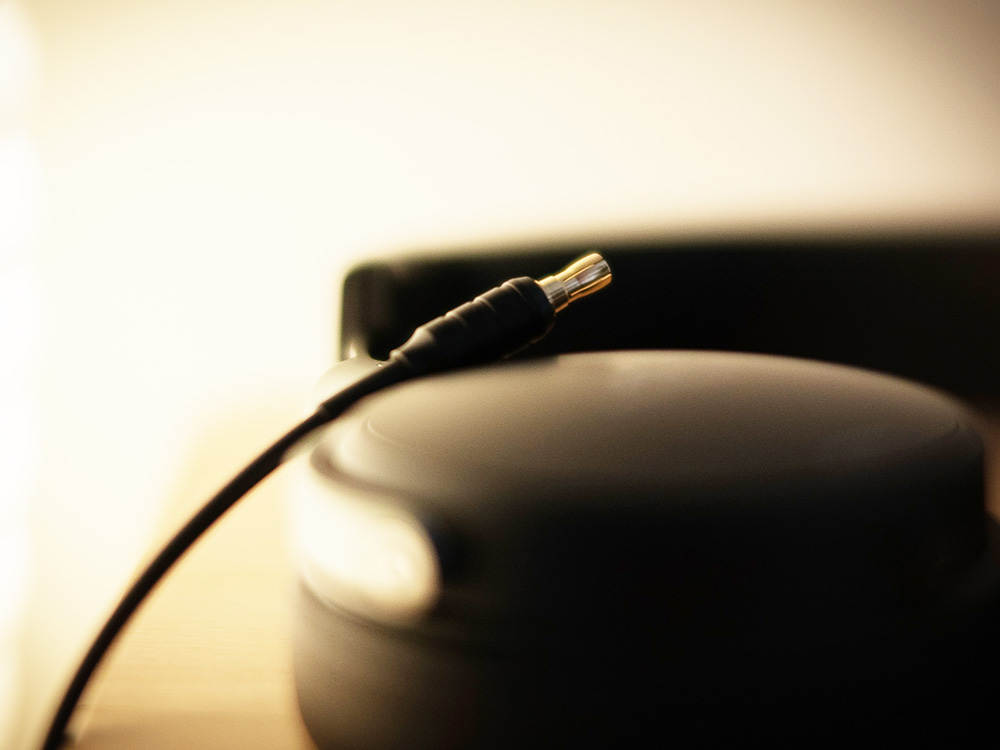
Final Conclusions
The HP-1000 are quite versatile but perform best in certain genres such as those containing many layers as with orchestra, movie soundtracks or classical. It also excels at acoustic or at Jazz because of the correct timber for those instruments. Rock sound excellent too but can sound a tad distant than ideal. Bass heavy soundtracks can sound good with tight kicks and a hint of physical rumble but I don't expect bass-heads to be completely satisfied here. Movies sound of course spacious and can be quite engaging because of this. For gaming these headphones do a great job at positioning but perhaps lack a bit of impact to accurately track shots coming from certain directions. During video editing I could notice anomalies in the sound easier than other closed backs would.
Soundmagic delivers on its promises with its expensive soundstage and audiophile signature, and probably overdelivers. The sound revealed textures of sounds to me that my more expensive headphones not necessarily do, which is amazing for the price these
go for. Being so versatile in their sound, these are now my go to main closed over ear headphone. Build quality is also amazing for it's price. The cups are much better coated than the HP150 and seem more scratch resistant. The yokes are now made entirely of metal, the headband of sheepskin leather and the pleather pads are much more comfortable and durable because of the perforated air holes in them and the better pleather material that is used. The clamp force is tight enough for them to easily seal on the head, but can be worn for hours on end due to the weight being so greatly distributed.You get a beautiful flat headphone case, which is cleverly designed to save space in your luggage as the headphone lays flat on it's cups in it. The thick proprietary cable itself is also very nice. It smoothly is inserted in the headphone but doesn't seat with a click despite sitting firmly. I prefer this design, as when the cable gets accidentally gets yanked you save your headphone from destruction as the cable unplugs itself. The downside is that only through Soundmagic will you be able to order a new one, and you don't get an extra in the nice carry case either. You do get a free extension cable however. Lastly, if you have trouble with any of your drivers, Sound-magic is willing to help you under your warranty if you can clearly communicate what your issue with the sound of one of the drivers is. In the end not everyone can appreciate this style of signature as it's not an easy
listen, with no frequency in particular sounding with an upfront nature anywhere in the spectrum. But for those that take their time, deep dive in the signature while sitting back and relaxing yet attending their entire mind to the soundscape are in for an amazing ride.
